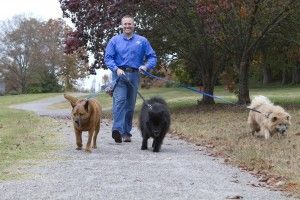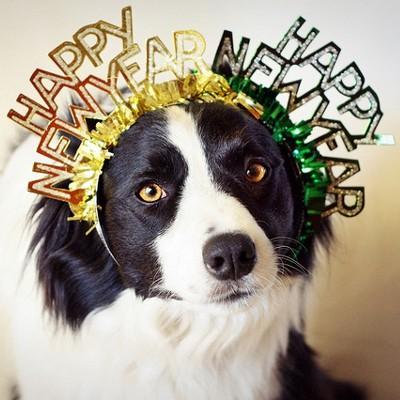By Dean Vickers, Director of Animal Welfare Studies and Education at Petsafe
Dean
 As the New Year begins and we make our standard resolution to lose weight, let’s not forget to add our overweight pets into the plan. As reward based training becomes more popular, so does pet obesity. This is a serious issue and obesity is a leading contributor to diabetes in pets. Let’s see what can be done.
As the New Year begins and we make our standard resolution to lose weight, let’s not forget to add our overweight pets into the plan. As reward based training becomes more popular, so does pet obesity. This is a serious issue and obesity is a leading contributor to diabetes in pets. Let’s see what can be done.
How Can I Help My Dog Lose Weight?
Although some dogs are prone to overeating, there are still steps you can take to minimalize the weight gain. More often than a predisposition for obesity, lack of exercise and eating the wrong types of food are the more likely culprit. Veterinarians can recommend a good food that can help pets lose and maintain a healthy weight. Overweight dogs may be suffering physically as a result of carrying the extra weight as well. Obese pets, like obese humans, do not live as long as their more active and weight appropriate counterparts. Obesity in pets is a condition over which the owner has significant control.
Feeding Your Dog
Most of us can appreciate the desire to eat things that are not good us. We love sugars and fats and anything deep fried – I do live in the south, you know. In many cases, it isn’t what you eat, but rather the quantity of what you eat. The same holds true with dogs. One of the worst habits you can teach your dog is to beg at the table. Table scraps can be detrimental to a dog’s health.
Physicians recommend that people can better maintain a healthy lifestyle by eating 6 small meals a day. The same is true for dogs. For a large dog, it is better to eat three small meals throughout the day rather than one huge meal. If the concern is availability to provide the mid-day meal during work hours, we carry timed feeders that will address this issue. Veterinarians can offer advice in selecting the quality food for your dog.
This is even more important with the dieting process because it is important to recommend and feed a quality weight loss food. I also add some fresh, steamed vegetables, particularly carrots, to my dog’s dry food. My dogs seem to enjoy the difference in taste and texture and the vegetables are an excellent source of extra vitamins and minerals that can help your beefy boy drop a few pounds. There is also a wide variety of kibble dispensing toys on the market.
Magic Mushroom and Tug a Jug stand out. Mental exercise is just as important as physical exercise for your dog. We carry a whole line of products available that drop treats on the floor when manipulated in a certain fashion. Most dogs will spend hours trying to get the treats out of the toy. You may need to spend time getting your dog to understand the toy when you first introduce it, but it will be worth the time.
Dean keeps his three dogs healthy by meeting their exercise and nutrition needs, and by keeping them active.
Keeping Your Dog Active
Now that the food has been addressed and adjusted, the next step is to increase the exercise. Grab your leash, clicker or remote and your dog and head out to the nearest park for some quality running, walking, and playing. Allow your dog ample time to rest during his exercise periods.
Keep plenty of fresh water on hand, along with a portable water dish, particularly during the summer months. This helps prevent the dog from overheating. A product called Hydro – Go Canteen, offers both; a bottle (canteen) with an attached bowl. Gradually increase the daily walks and walk for a greater amount of time. The goal here is to achieve a minimum of 30 minutes of exercise in each day.
Add a longer course to your daily jaunts and walk for a longer period of time. Aim to get a minimum of thirty minutes of exercise each day. A greater success rate occurs when the exercise regimen is varied. This keeps both, owner and dog more motivated.
Substitute Treats For Scratches
Dogs become accustomed to getting treats for good behavior, or just because they are adorable. Monitor both, the quantity and the quality of the treats. Show your dog attention as a reward while he is dieting, it is important to avoid giving him any additional treats. Many dog treats are laden with fats and are not good for dogs. You don’t want your dog to feel that he is being punished while he sheds the extra pounds, make certain he is given extra physical attention to make up for the lack of treat rewards. Pets are companions for life, but that needs to be a quality life. With a few lifestyle changes and consistency, that pudgy pup will become a picture of canine perfection – in more ways than one.
Tell us what you plan to do differently with your pooch this year.
ABOUT DEAN As Director of Animal Welfare Studies and Education, Dean provides education on the proper use and benefits of PetSafe products to legislators and pet owners worldwide. In 2005, Dean volunteered for two weeks with The Humane Society of The United States and worked on the rescue efforts in the aftermath of Hurricanes Katrina and Rita. With military training as a survival and decontamination instructor, animal shelter background, and large animal handling experience, his skills were utilized in the disaster region. After Katrina, he was hired as the Ohio State Director for The HSUS. In that role, he not only worked with legislators on policy change, but he continued his hands on approach to assist with animal abuse/ neglect cases, rescue during natural and man- made disasters.
He has also worked with law enforcement on several animal fighting raids and advocated for animal welfare reform. Most recently, he worked with Sumter-Disaster Animal Response Team assisting with oiled bird recovery and release. Dean has conducted trainings, written articles and given speeches on animal welfare, rescue and advocacy issues throughout the United States for diverse audiences and media outlets, including: Discovery Channel, CNN, Animal Care Expo, IACP and NACA. His position with Radio Systems Corporation has allowed him to remain involved in national and international animal welfare issues. Dean is a graduate from The Ohio State University with a degree in History and Political Science. He lives in Knoxville with his 3 rescue dogs, Annikka, J’Maul and Isabella.



